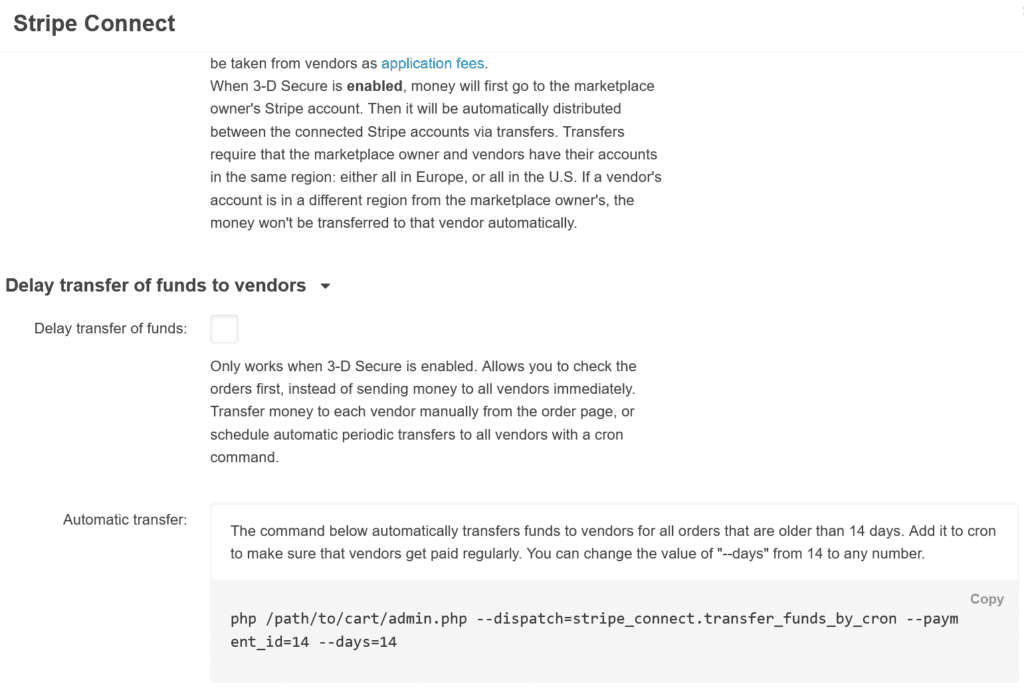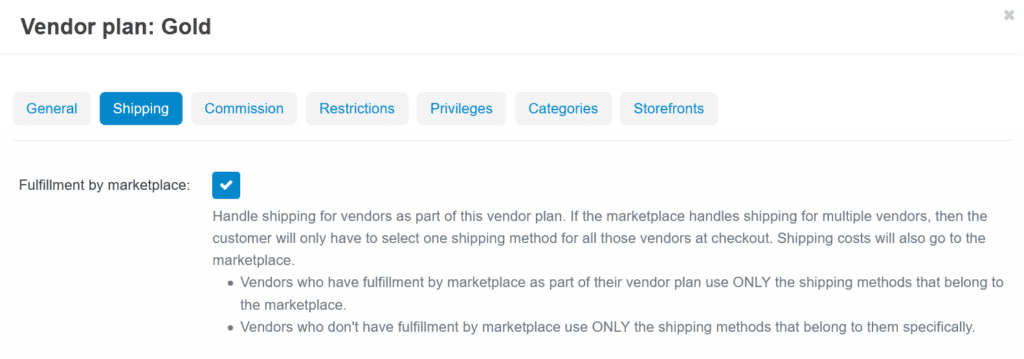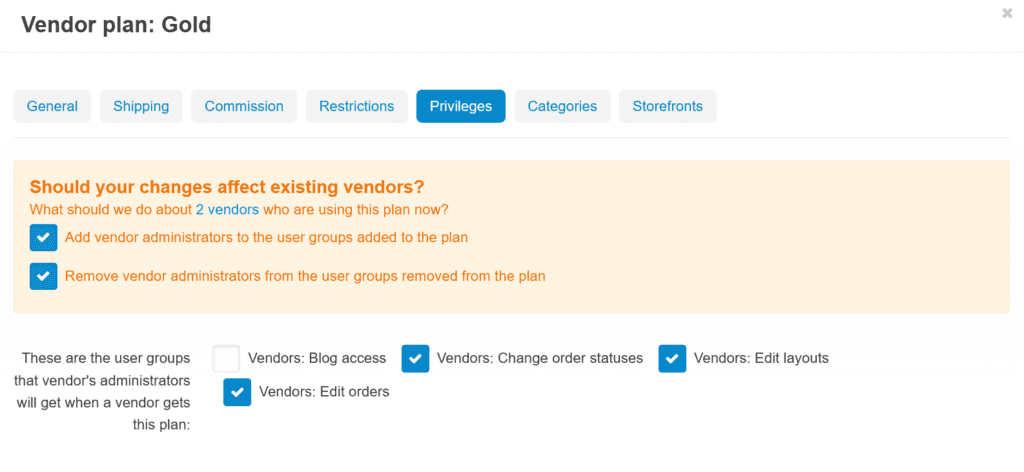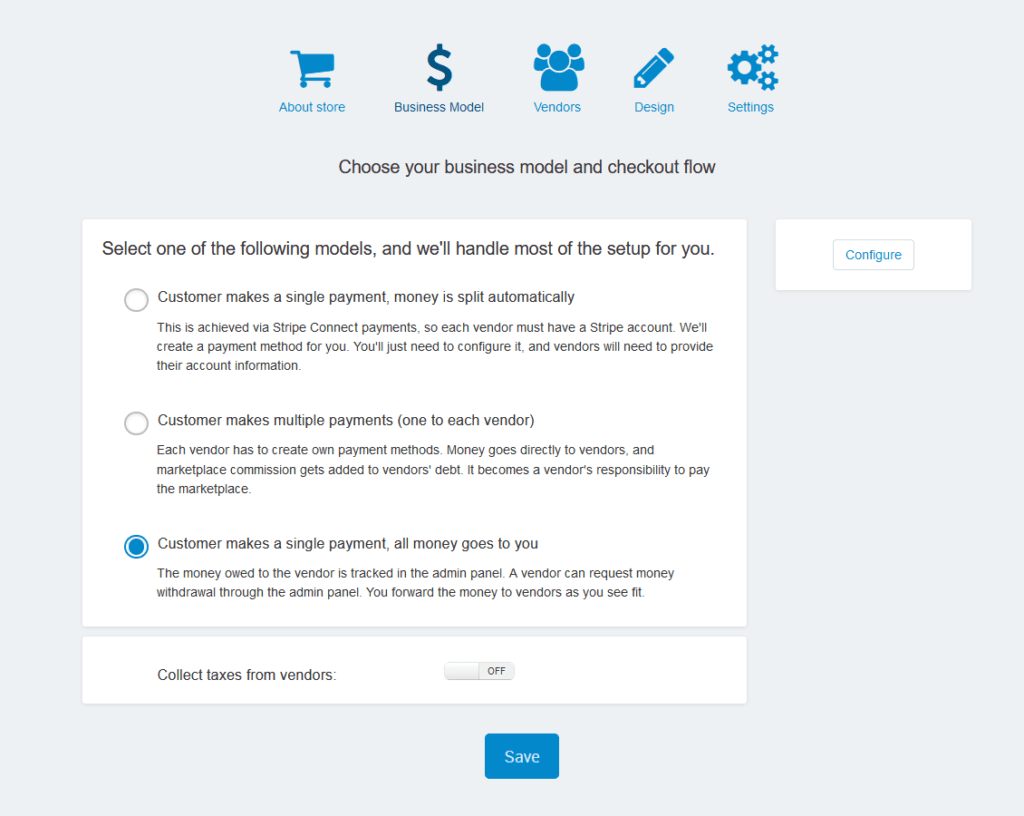Meet Multi-Vendor 4.13.1 with Workflow Improvements
Hello! We have released CS-Cart and Multi-Vendor 4.13.1. This article covers the biggest changes specific to marketplaces. We suggest checking out other improvements in version 4.13.1—some of them will benefit your marketplace as well.
Delay transfer of funds to vendors in PayPal Commerce Platform and Stripe Connect
Payment methods like PayPal Commerce Platform and Stripe Connect are designed specifically for marketplaces. They accept money from the customer once, and then split it between the marketplace and the involved vendors.
Previously, the money wired through those payment methods ended up on vendors’ accounts as soon as possible after the purchase. That’s not always ideal. Sometimes, it’s best to keep the money in the marketplace account and wire them to vendors only if everything is ok with the order.
That’s why PayPal Commerce Platform and Stripe Connect now allow you to delay transfer of funds to vendors. You can do that in the settings of each payment method. When transfer is delayed, the “Transfer funds to vendor” button will appear on each order with this payment method. However, this isn’t the only way to transfer funds.
The settings of these payment methods now have a CRON command. If you add it to CRON and run it regularly, money for orders will be transferred to vendors automatically if an order is old enough. For Stripe Connect, you need to configure that CRON command to automate things. But PayPal Commerce Platform will only hold the money for up to 28 days, and then transfer it to vendors automatically.

Connect more potential sellers to PayPal Commerce Platform
Another improvement related to the PayPal Commerce Platform is that vendors from a broader list of countries can connect to your marketplace now. Previously, you could work with vendors only from the counties where the PayPal Commerce Platform is supported. Now, you can also work with vendors from any country that supports PayPal Express Checkout. Germany, in particular, was requested by many of our clients. These vendors will still receive the money as if they were using the PayPal Commerce Platform.
Order fulfillment by marketplace [Beta]
This new add-on handles the situation when the marketplace takes care of shipping for vendors. It suits the marketplaces that collect products from all vendors and ship those products to customers together. In such cases, the money for shipping needs to go to the marketplace. Customers also need to select only one shipping method (instead of one for each vendor).
The “Order fulfillment by marketplace [Beta]” add-on allows you to:
- Create shipping methods that belong to the marketplace. The money taken for shipping will go to the marketplace instead of vendors.
- Decide what vendor plans include fulfillment by marketplace. Vendors who use those plans will offer the marketplace shipping methods instead of their own.
- Collect only one payment, even if the customer orders the products from multiple vendors with fulfilment.
This functionality is new, and the direction it takes will depend on the feedback we get about it.

Easier management of vendor privileges
The rights you want to offer to vendors may depend on a vendor plan. That’s why you can now assign user groups to vendor plans. A vendor plan will give these user groups to all the administrators of the vendors who move to that plan. Naturally, the groups from the old plan will be removed.
This allows you to reduce time on managing the privileges of vendors who move from one plan to another. Note that this change affects only Multi-Vendor Plus and Ultimate: only these editions have the “Vendor privileges” add-on.

Faster approval of new vendors
Until version 4.13.1, vendors always got the “New” status after registration. With that status, they didn’t appear on the storefront and couldn’t access the admin panel. You had to approve every single vendor manually.
Some of you requested the ability to allow vendors to start working with the marketplace immediately after they applied.
In version 4.13.1, applying vendors get access to the vendor panel immediately after registration. They end up with one of the following statuses:
- Pending (default)—grants access to the vendor panel, but vendors and their products don’t appear on the storefront.
- Active—vendors and their products appear on the storefront.
What status the vendors will get by default depends on the “Approval of newly-created vendors” setting of the “Vendor data premoderation” add-on. By default, vendors require approval before their products appear on the storefront.
Configuration wizard for new Multi-Vendor marketplaces
If you’re just starting your Multi-Vendor marketplace, the number of things to do can get intimidating at first. There are many settings and add-ons that help you tailor Multi-Vendor to your needs. Not all of that is easy to find.
That’s why version 4.13.1 comes with a wizard that guides you through some of the settings just in a few screens. For example, the Business Model screen lets you determine how you accept payments, installs the necessary add-ons, and creates payment methods if necessary. You just need to enter the credentials afterward.

Multi-Vendor 4.13.1 also receives all the changes and improvements from CS-Cart (our platform for single-seller stores). They are described in a separate blog article. Check it out to see what else has improved in your marketplace.
The upgrades to version 4.13.1 are already available. As usual, we hand out upgrade packages in limited numbers for the first few weeks after the release. But then we lift that restriction. So if you don’t see this upgrade in your Upgrade Center yet, please try again later.
Yan Anderson is the Head of Content Marketing at CS-Cart with over 10 years of experience in the eCommerce industry. He's passionate about explaining complicated things in simple terms. Yan has expertise in building, running and growing eCommerce marketplaces. He loves to educate people about best practices, new technologies, and trends in the global eCommerce industry.

